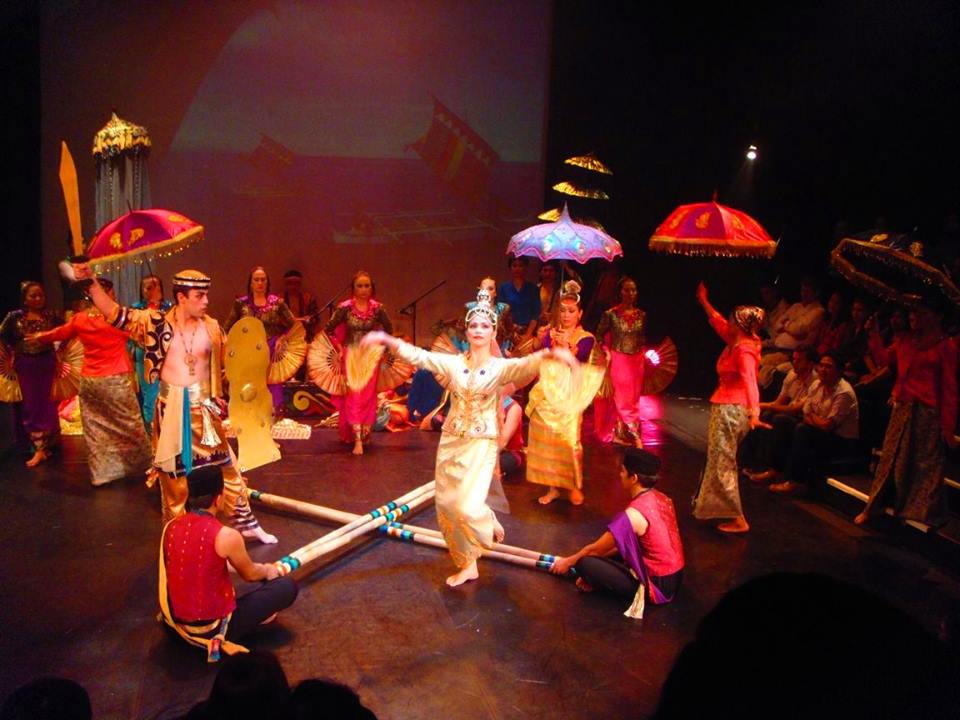The Ramayana Story Effect
Ramayana has its bearing across many countries and in many forms. Undoubtedly there is no other epic on mythology that has its footprint across numerous nations. Basically because it the story of good winning over the evil and worldwide the most important confrontation and victory of humankind is this aspect.
Maybe this could be reason for Ramayana gaining popularity across different cultures and nations. Somewhere it is story of the kings, few treat it has a epic poem, few have it among the local tribal culture in Philippines it is part of local dance form that tell the story of Ramayana.

Ramayana in Philippines
The Philippines’ famous dance ‘Singkil’ is based on the Ramayana. It is a folk dance of the Maranao people of the island nation’s Lake Lanao. The Hindu religion came to the Philippines from the Javanese empire of Majapahit.
Ramayana portrays the battle between good and evil. Rama, with his wife Sita and his brother Lakshmana, represent the eventual victory of good over evil, represented by Ravana, the ten-headed demon king. Rama is helped by his devotee, Hanuman and the army of monkeys under the command of the monkey king Sugriv.
Maranao version of Ramayana
Versions from the different ethnic groups of the Philippines exist. The Maranao version is the Maharadia Lawana (Maharaja Ravaṇa). Lam-Ang is the version of the Ilocanos. In addition, many verses from the Hud-Hud of the Ifugao are derived from the Ramayana and the Mahabharata.
In the dance ballet of Maranao Philippines shows Ram as a colossal hero. A hero who stands for dharma. A hero who fights. A hero who loves. “The idea is to stay rooted in the epic and engage the audience, be able to narrate episodes that tug at the heart strings, be able to explore the treasure of meanings and metaphors and encourage the audience to reach for real texts and deeper meanings,” a member says.
Here, Ram even gives Sita a light peck on the forehead, as he leaves to chase the swaranamrig. The peck becomes a fleeting-sweet distraction for Indian actors and dancers attending this performance, and, thankfully, no one in the auditorium seems to have a problem with Ram, the beautiful Ram. No cold-eyed view and no feminist lens.
The Connect between Ramayana and Philippines
According to Juan R Francisco, in this research called “The Indigenization of the Rama Story in the Philippines”, he writes: The Rama story may have reached the Philippines between middle of the seventeenth and early part of the nineteen centuries. This gives a frame in which to visualize the length of time during which the Rama story became part of the folk literary tradition of the Philippines and was indigenized in the country.
Juan R Francisco in another research titled The Ramayana in the Philippines, he writes: In 1968, I discovered a Maranao text titled Maharadia Lawana, a condensed version of Ramayana.
The Maranao version tells of Maharadia Lawana, the eight-headed son of the Sultan and Sunlatness of Pulu Bandiarmasir. He was so irascible that his father banished him from Pulu Nagara and island. Later he returned to his father’s kingdom where he regained his father’s grace.
In another kingdom, Radia Mangaandiri and Radia Mangawa, sons of Sultan and Sultaness of Agama Niog, set out on a 10 year sea journey to court Tuwan Potre Malaila Tihaia, daughter of the Sultan and Sultaness of Pulu Nabandai. On the way, they were shipwrecked and were, by coinceidence, washed ashore to Pulu Nabandia. Soon Mangandiri won the hand of Tuwan Porte Malaila Tihaia. But after some time, he and Mangawarna became homesick and decided to return to their homeland.
During the journey, Malaila Fanding saw a golden-horned deer grazing and wanted it caught. But the deer turned out to be a ruse so that Maharadia Lawana could abduct Malaila Ganding.
Meanwhile, Managandiri dreamt that he begot a monkey child Laksamana. It turned out the dream was true. Later, Laksamana, by accident, met Mangandiri, and Mangawarna and helped them rescue Malaila Ganding.
In the end, Lawana rules with justice, Laksamana metamorphosed iinto a handsome datu. Mangandiri and his wife and his brother returned to Agama Niog, where they lived happily ever after.
To show the Indian epic Ramayana’s influence on Maranao literature, the Maharadia Lawana will be compared with Hikayat Seri Rama, the Hikayat Maharaja Ravana and Malay Fairly Tale based on Ramayana.
The comparison shall be primarily on three aspects – the major characters and their relationships with each other; the names of the important places and episodes connected with these places; and interpolations and accretions.
Popular Dance Ballets
There have been several Philippine adaptations of the epic for the stage. Ballet Philippines’ dance-musical “Rama Hari” premiered in 1980 and was restaged in 2012, with choreography by Alice Reyes, music by Ryan Cayabyab and libretto by Bienvenido Lumbera.
The Philippine Educational Theater Association staged Rody Vera’s “Ang Paglalakbay ni Radiya Mangandiri: Isang Pilipinong Ramayana” in 1993.
SK Productions staged “Rama at Sita” in 1999, a multi-million-peso musical featuring Ariel Rivera as Rama and Lani Misalucha as Sita, using excerpts from “Rama Hari” and new songs by Danny Tan, Roy Iglesias and Dodjie Simon.
The “Ramayana” has also been used before to bridge Asean countries. In 1998, Asean produced “Realizing Rama,” featuring two dancers from each member country, with choreography by Denisa Reyes and book by Nicanor Tiongson.
@religionworldin
[video_ads]
[video_ads2]













